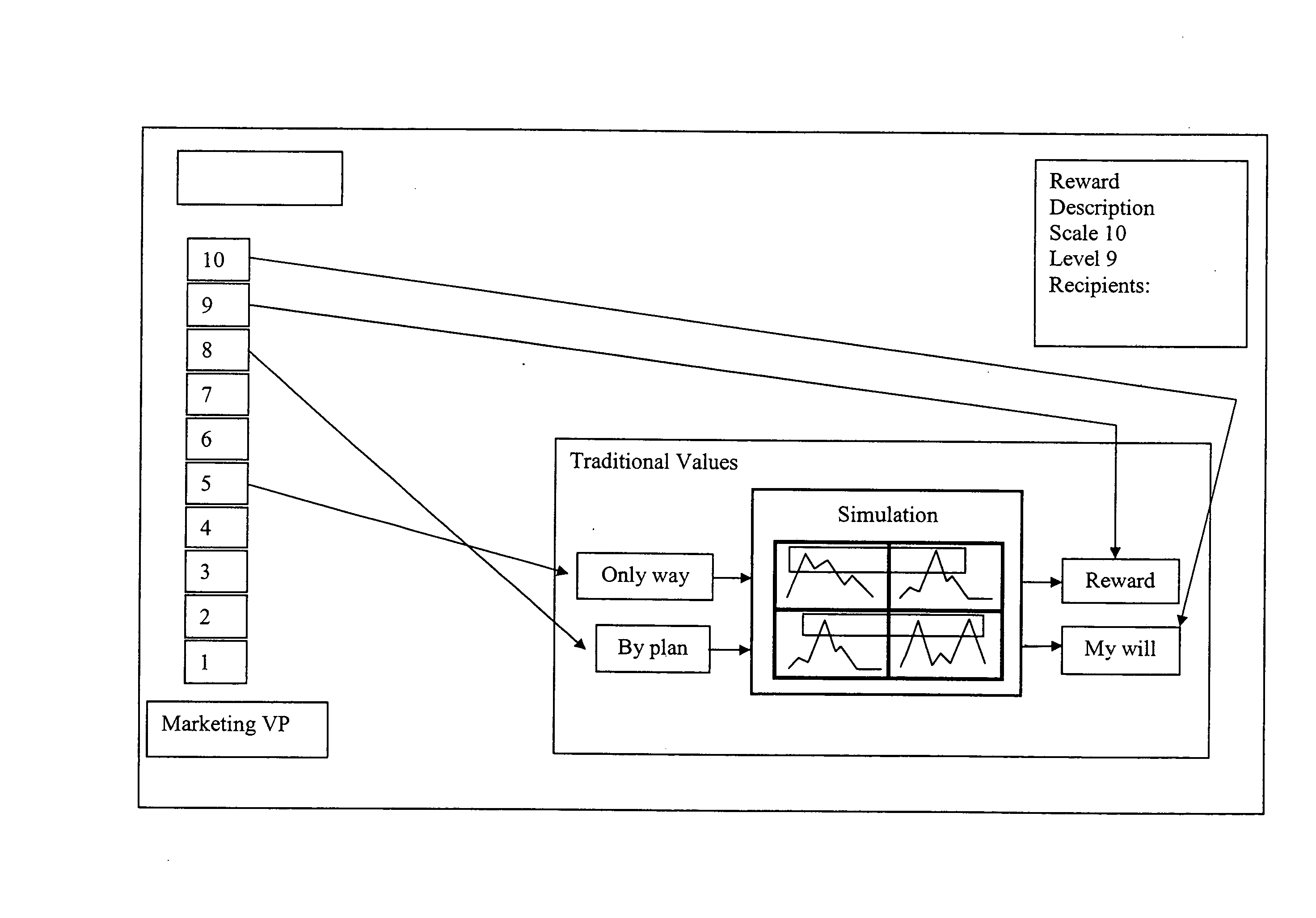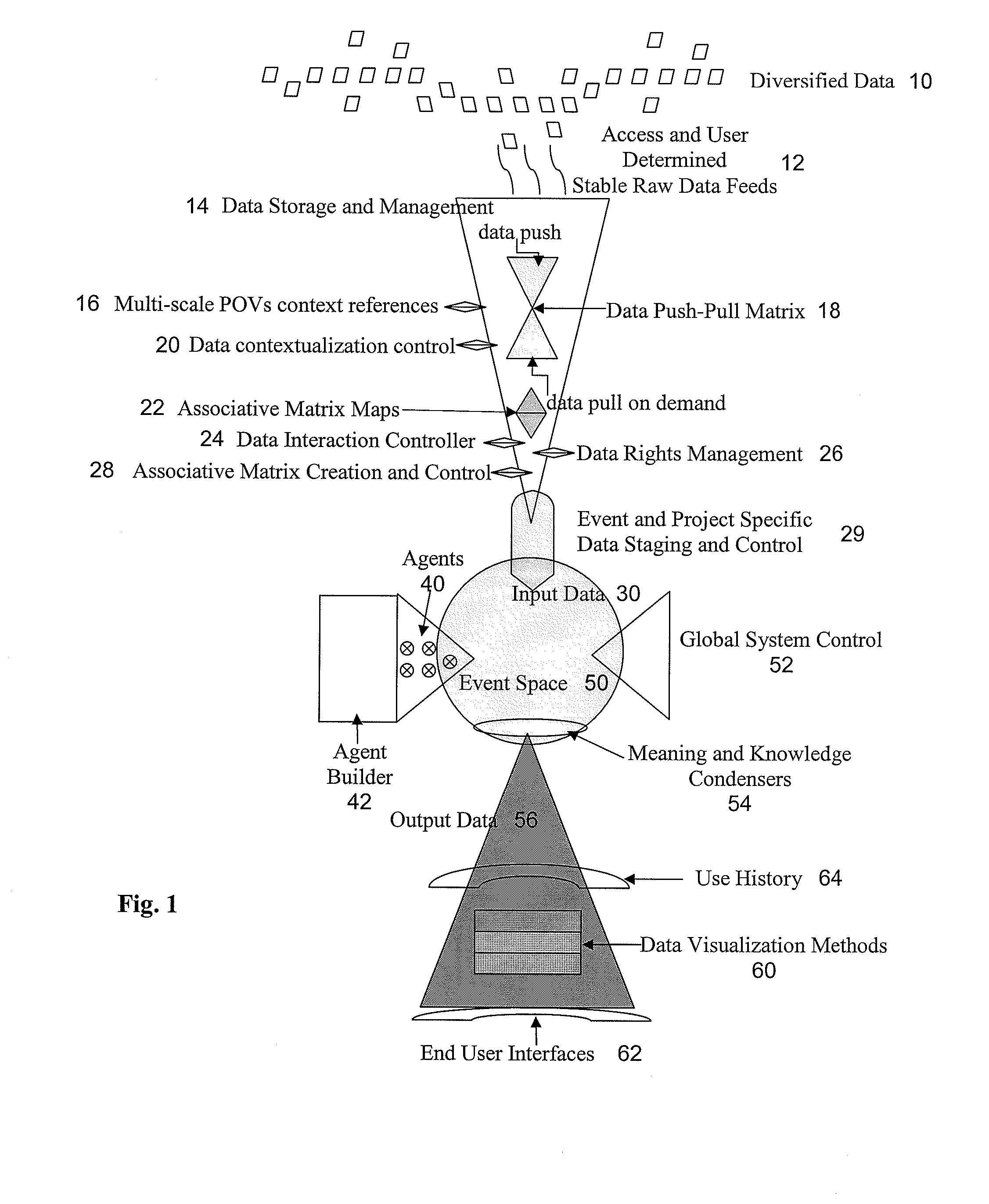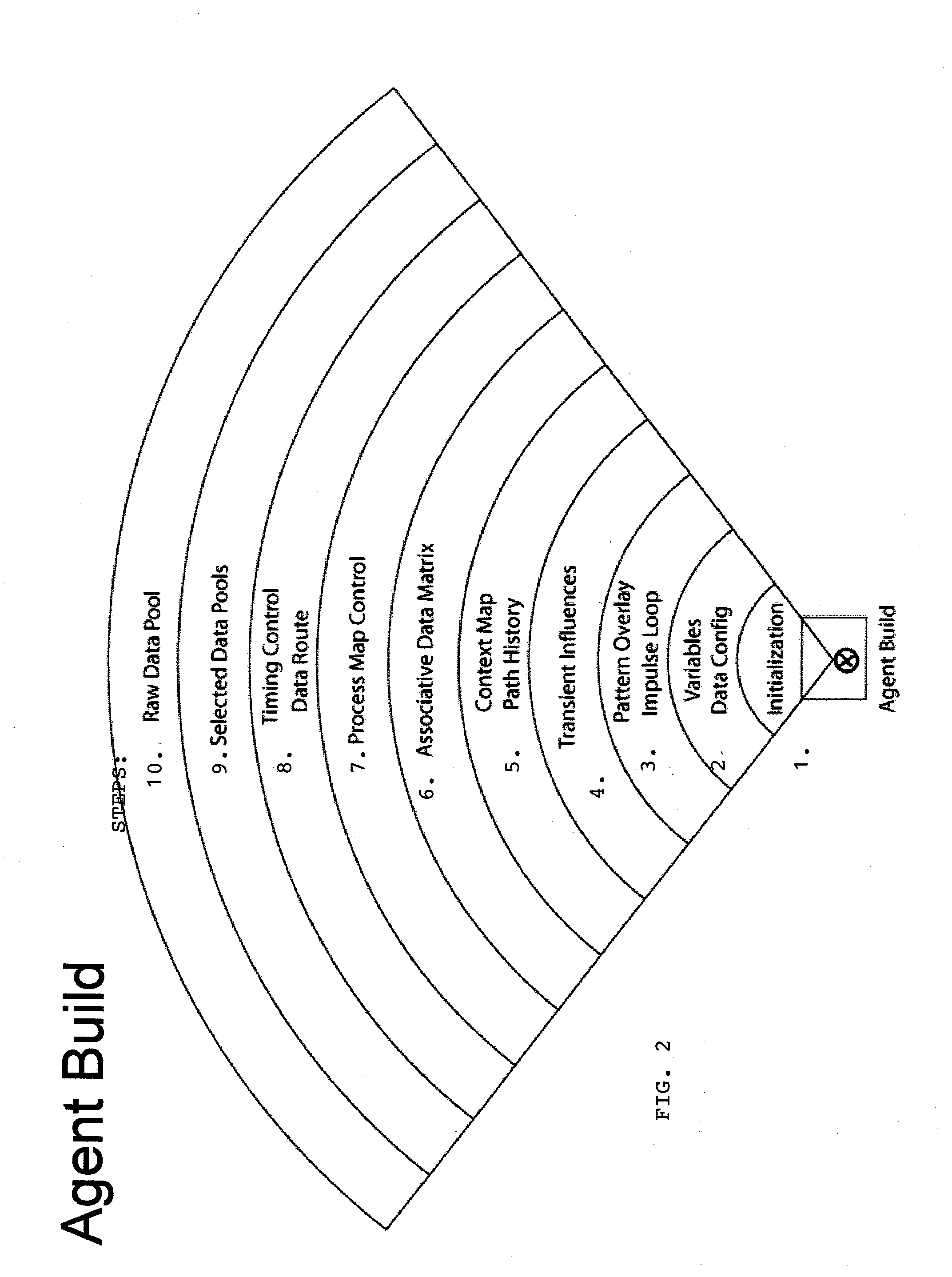Data visualization methods for simulation modeling of agent behavioral expression
a data visualization and agent technology, applied in biological models, instruments, analogue processes for specific applications, etc., can solve the problems of difficult to predict the behavior of nodes and clusters of networks to respond to new information or to changing conditions and circumstances, the status, intentions, and future actions of networks or other complex adaptive systems can be difficult to assess
- Summary
- Abstract
- Description
- Claims
- Application Information
AI Technical Summary
Benefits of technology
Problems solved by technology
Method used
Image
Examples
Embodiment Construction
[0031] In the present invention, a cultural simulation model is used to develop a behavioral expression of an agent (point-of-view) archetype, and simulate that agent archetype's responses to sources of real-world information reflecting changing conditions of the environment being modeled. The agent archetype's responses are presented in new visual formats to allow relevant information to be discerned from the patterns of the responses. In the following detailed description of a preferred embodiment of the invention, a basic implementation of the cultural simulation model is described which models an agent's behavioral expression (point-of-view) in terms of keywords and phrases likely to be of interest to the agent's point-of-view from real-world information sources. During a simulation, the agent's responses to text obtained from real-world information sources are charted in certain visual formats (waveforms, star charts, grid charts, pole chart series) that allow relevant informat...
PUM
 Login to View More
Login to View More Abstract
Description
Claims
Application Information
 Login to View More
Login to View More - R&D
- Intellectual Property
- Life Sciences
- Materials
- Tech Scout
- Unparalleled Data Quality
- Higher Quality Content
- 60% Fewer Hallucinations
Browse by: Latest US Patents, China's latest patents, Technical Efficacy Thesaurus, Application Domain, Technology Topic, Popular Technical Reports.
© 2025 PatSnap. All rights reserved.Legal|Privacy policy|Modern Slavery Act Transparency Statement|Sitemap|About US| Contact US: help@patsnap.com



